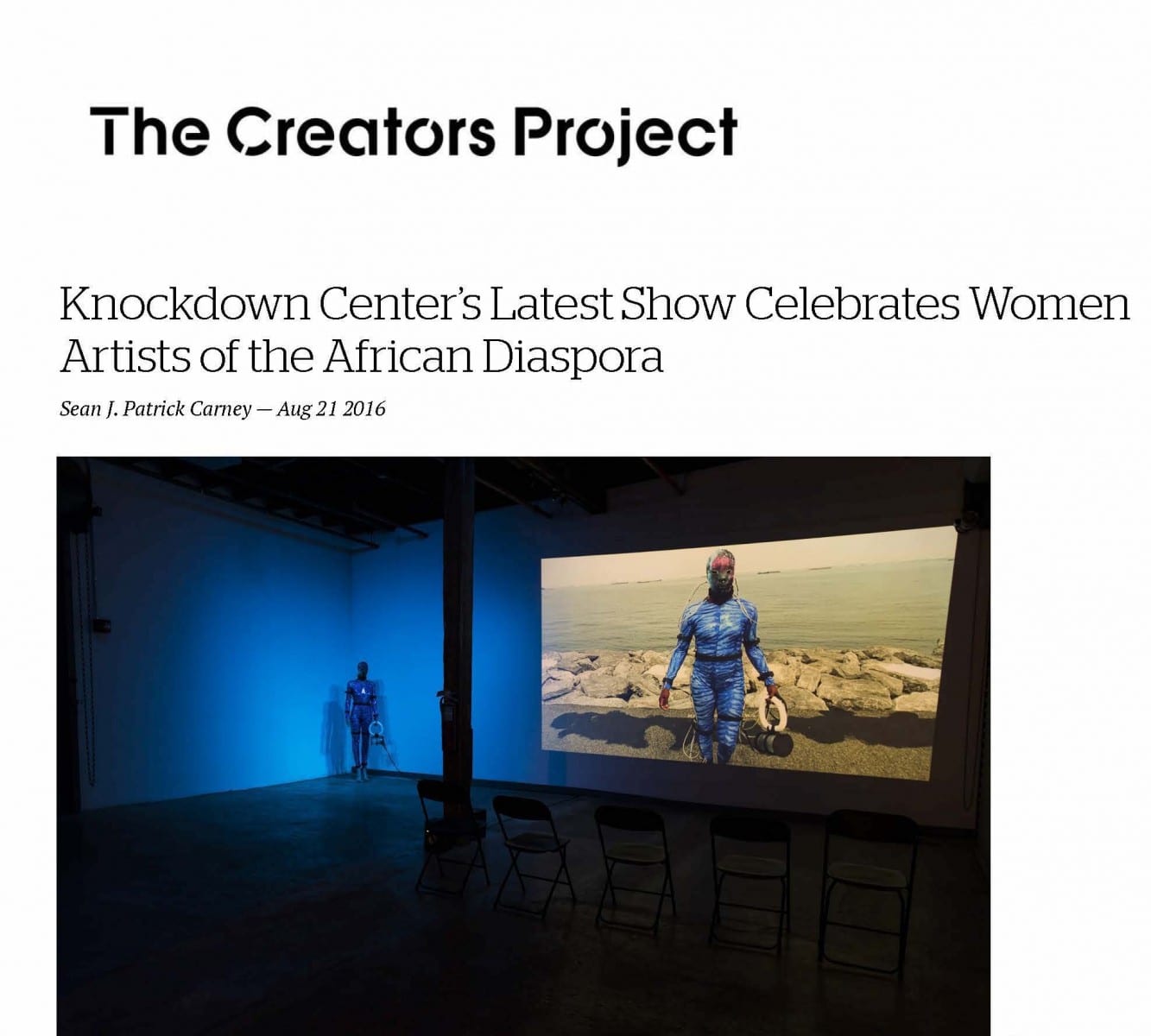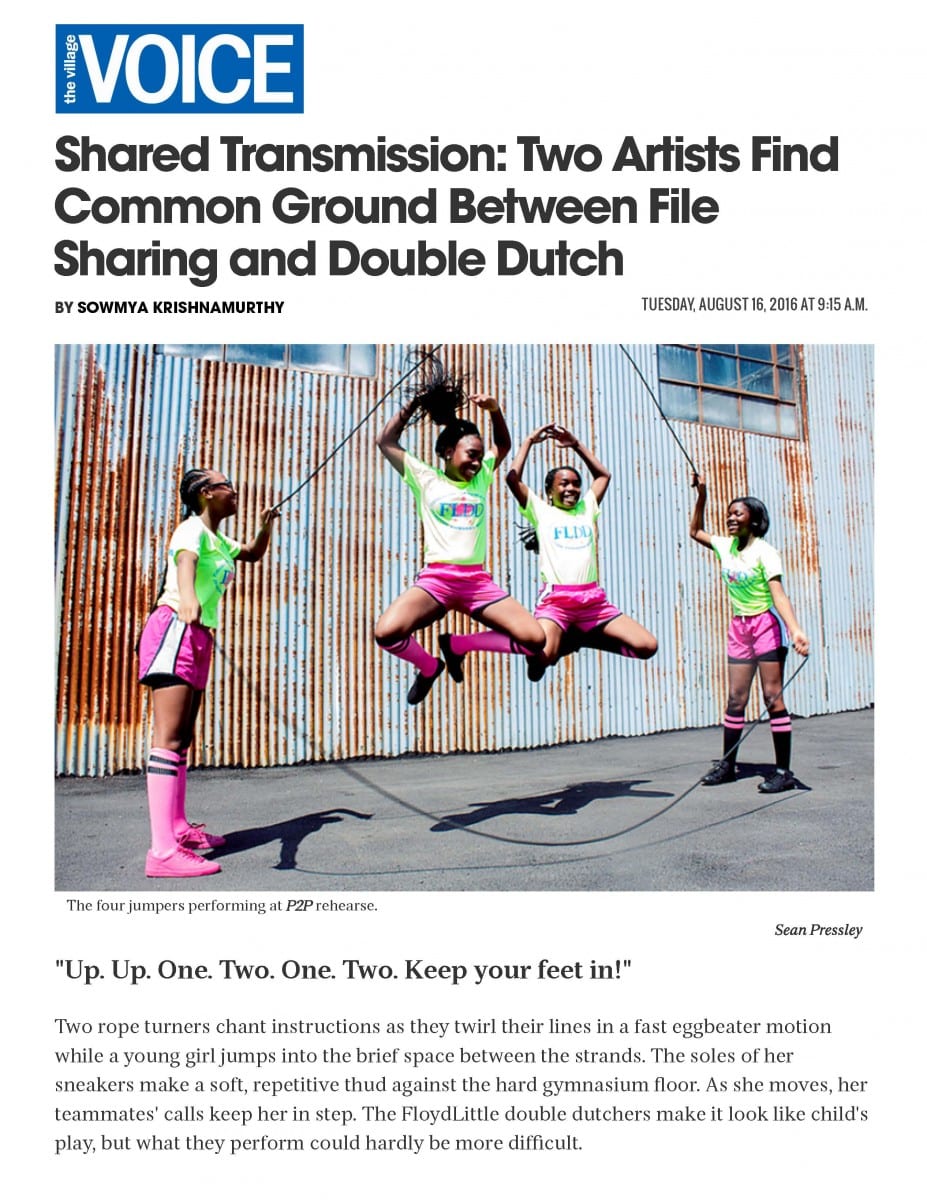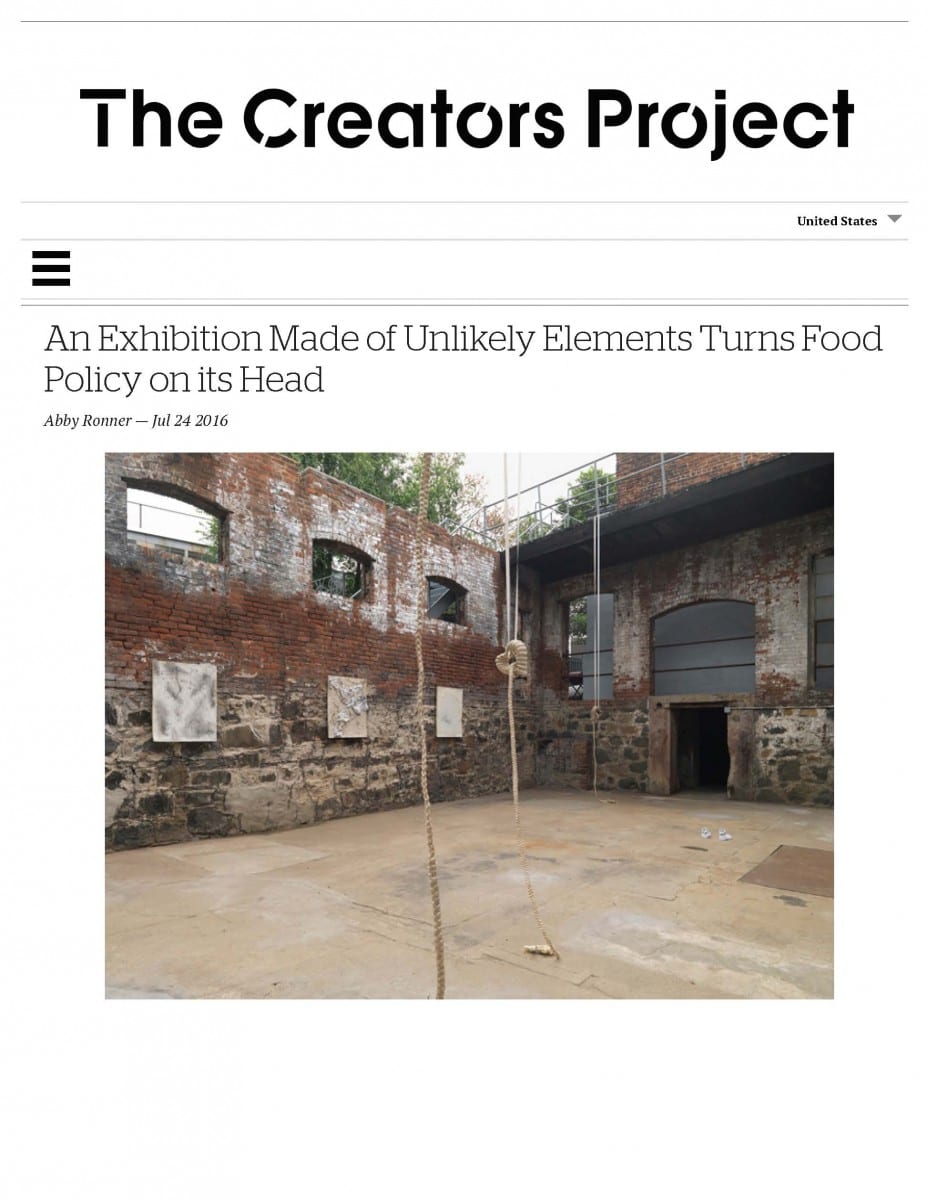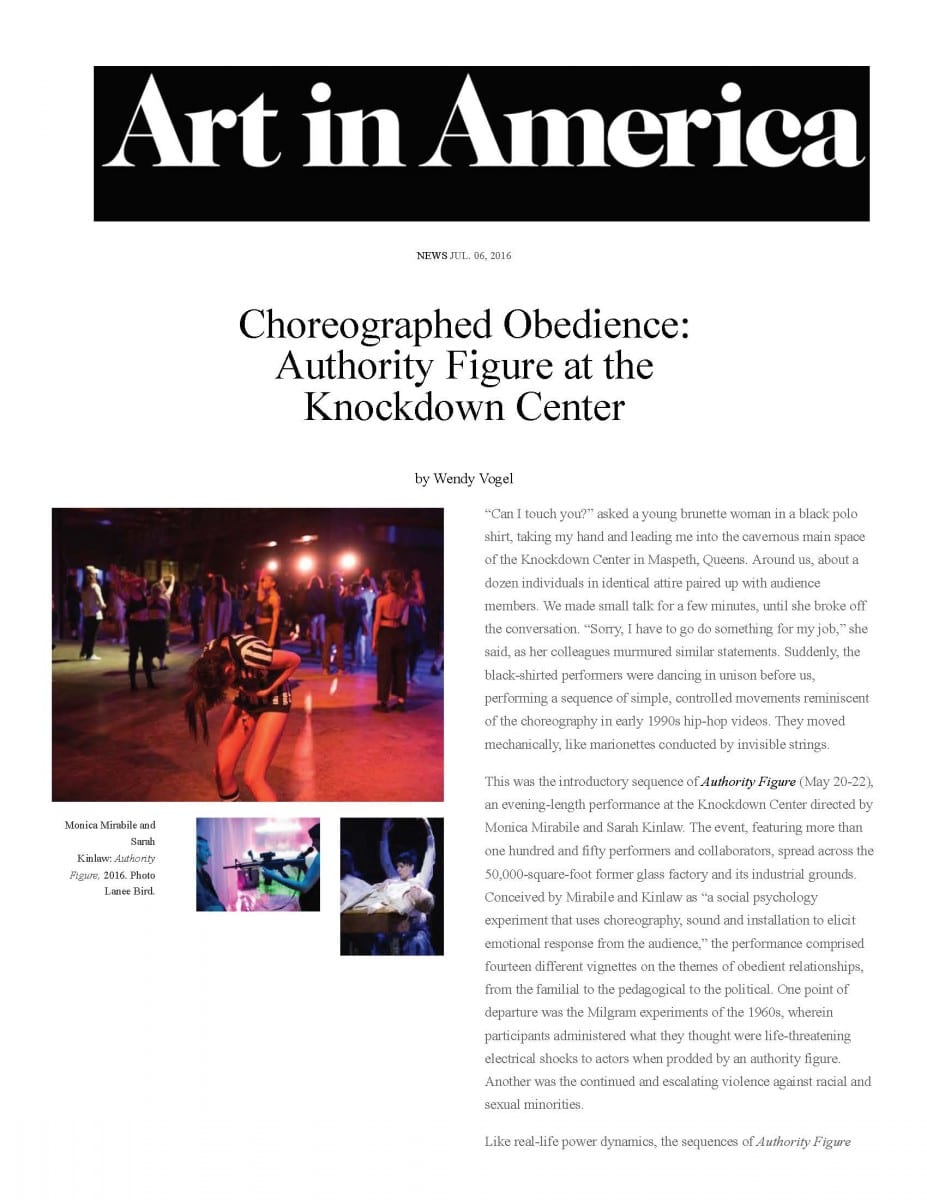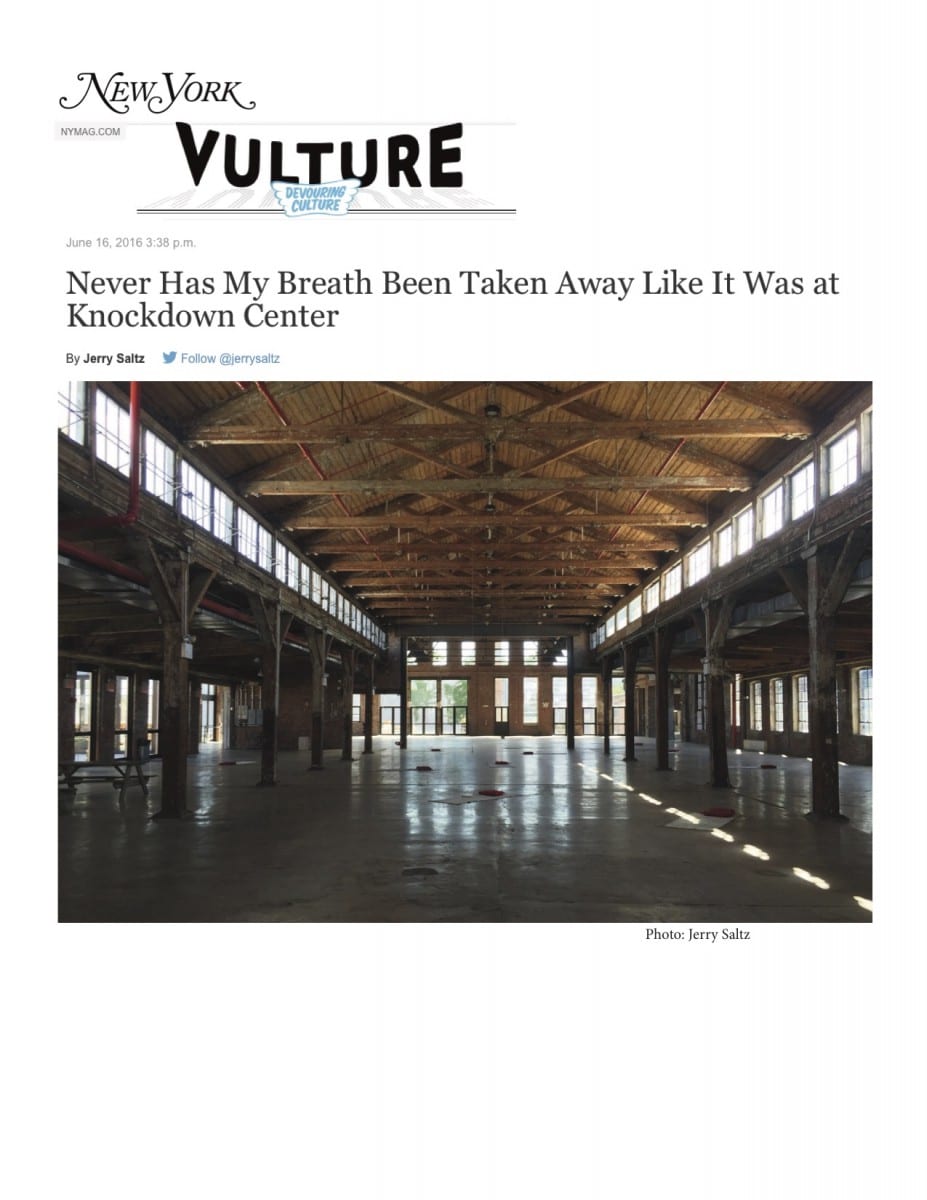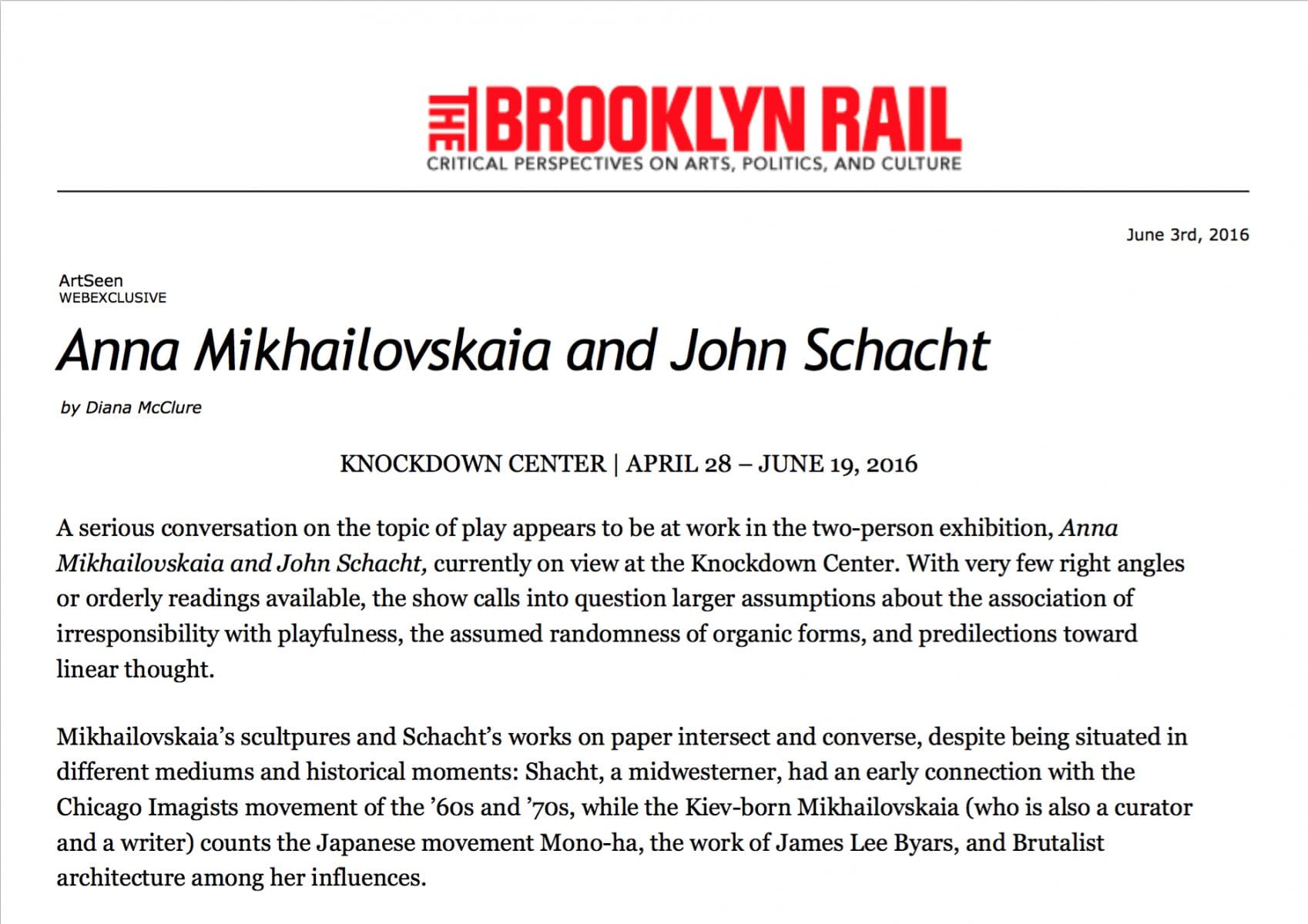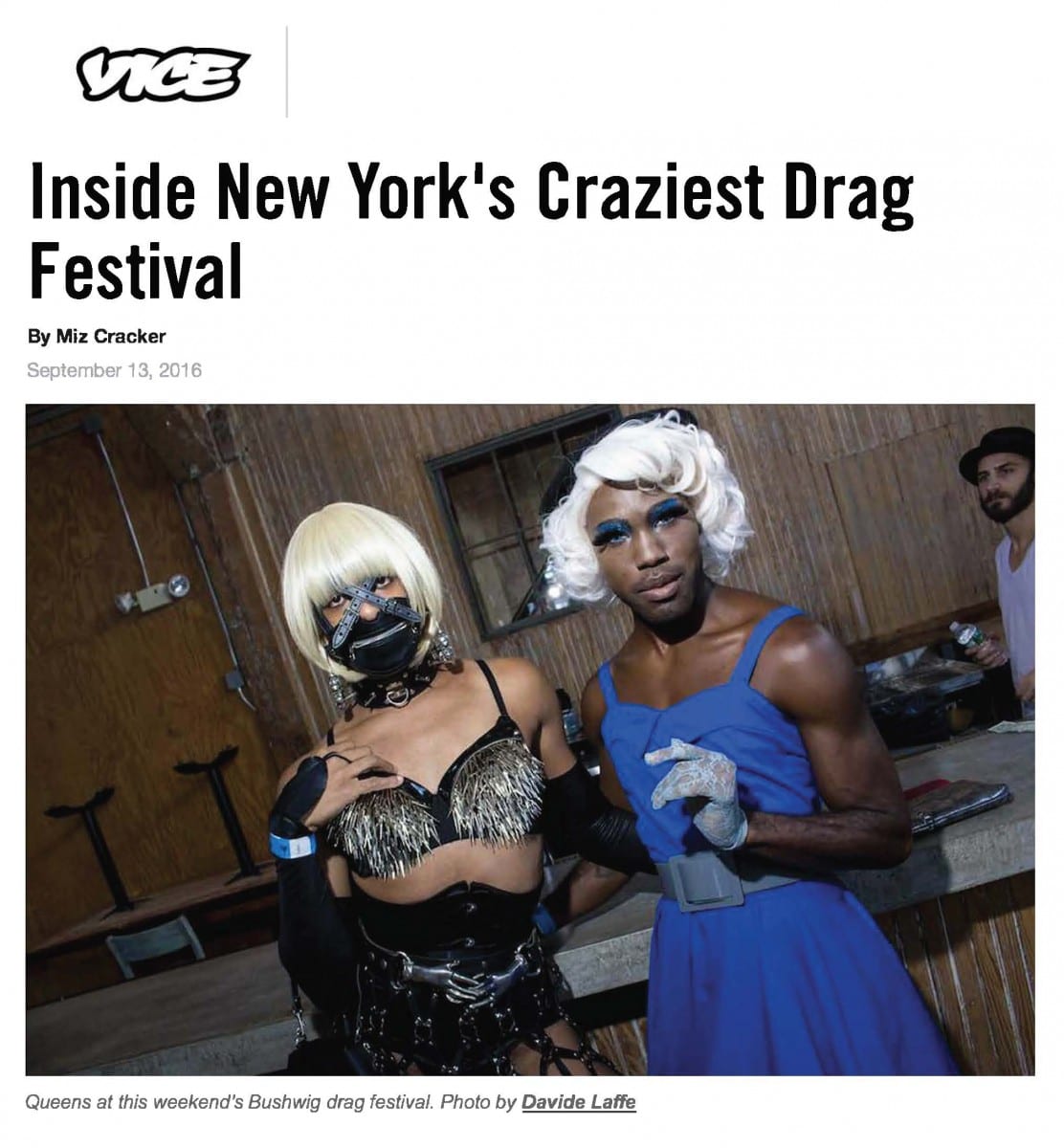
Within the world of drag, there’s a sharp divide between the mainstream and alternative drag (otherwise known as alt drag). Performers in the former category tend to embrace womanly (or “fishy”) looks, haute couture, and Broadway-inspired dance numbers; within the latter, you’ll find more androgynous (or “genderfuck”) styling, DIY outfits, and productions that draw from performance art. And drag’s present moment, which is so defined by the success of RuPaul—who just won a Reality TV Host Emmy this Sunday night—has created, in the minds of many, a stark division between the mainstream drag we see on TV and the alt drag of edgy clubs and underground queer nightlife.
Last weekend’s Bushwig drag festival in New York City—a two-day celebration of LGBTQ art, culture, and, most importantly, alt drag—attempted to prove the fluidity of those divisions, and that they don’t (or shouldn’t) prevent queens from coming together, especially now that drag is bigger and more visible than ever before.


